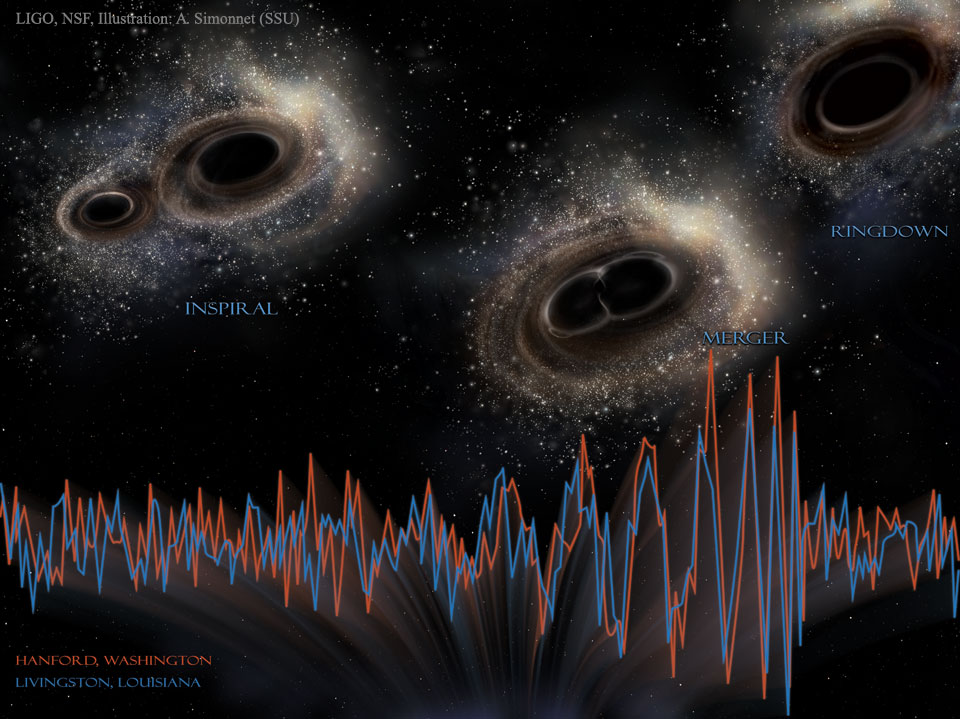Laser Interferometer Gravitational-Wave Observatory (LIGO)

Gravitational waves are ripples in the fabric of space and time that are created by massive objects that move or change speed. They were predicted by Albert Einstein's theory of general relativity in 1915, and their existence was finally confirmed by the Laser Interferometer Gravitational-Wave Observatory (LIGO) in 2015.
To understand gravitational waves, imagine a person standing in the middle of a pond, throwing a rock into the water. This creates ripples on the surface of the pond that travel outward in all directions. Similarly, when massive objects like stars or black holes move or accelerate, they create ripples in the fabric of space and time that propagate outward at the speed of light.
These ripples are very weak and difficult to detect, but sensitive instruments like LIGO can pick up the tiny distortions in space caused by the passing of a gravitational wave. By studying these waves, scientists can learn about the properties of the objects that created them, such as their mass, spin, and distance from Earth.
LIGO consists of two identical detectors located in Livingston, Louisiana and Hanford, Washington, each featuring 2 four-kilometer-long arms arranged in an L-shape. It uses lasers and mirrors to measure tiny changes in the length of these arms caused by the passing of a gravitational wave. The ripple in space caused by the first recorded black hole merger was less than 1/1000th the diameter of a proton!
The image above shows the first signals received by the two observatories (red and blue lines) and a drawing of what created them (two black holes orbiting each other and then merging).

